Have you grown any nectarines that look like this?
Not very pretty, is it? This is the Goldmine nectarine, and sadly, they have a tendency to get marks on their skin.
Related Articles
How much fruit will your tree produce?
Working out how much fruit a mature fruit tree can grow will help you plan how many trees you need in your garden to meet your family’s needs.
How to prune your apple tree
Pruning apple trees takes a little more specialist knowledge than other fruit types, but your trees will reward you with ample crops.
Taming monster fruit trees with renovation pruning
Learn how to use a technique called renovation pruning to tame large, unpruned, and out-of-control monster fruit trees.
The good news is they only do it if they get rained on when they’re almost ripe. Or when they’re not quite ripe.
Oh, or if the weather conditions don’t suit them perfectly. Or you look at them the wrong way!
Yes, like many heritage varieties, they’re a bit fussy!
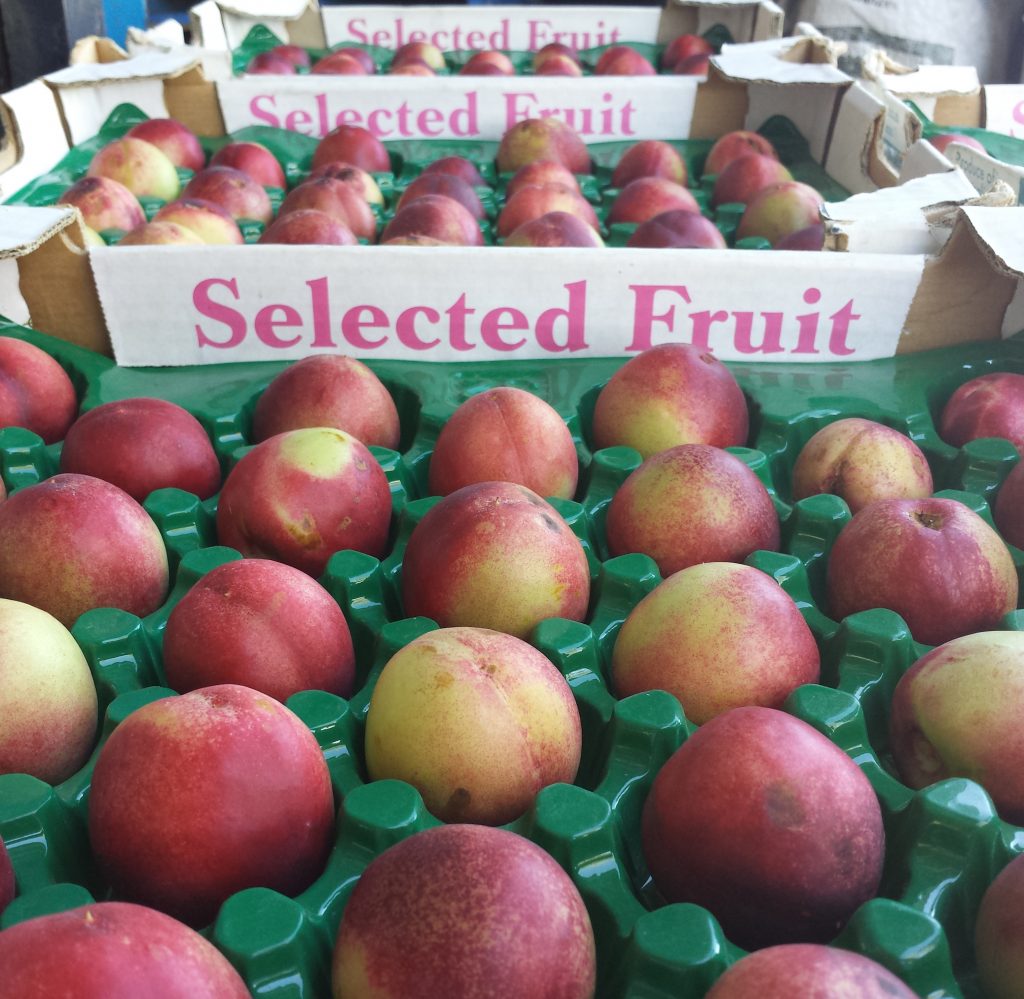
Why are heritage nectarines vulnerable?
Heritage varieties often have thin skin, and this is particularly true for Goldmine.
This means they tend to mark very easily. It’s one of the reasons that many heritage varieties are no longer grown commercially. Commercial fruit is picked into bulk bins, then put over a grader in the packing shed, packed into boxes, and then transported by truck to market.
No matter how carefully the grower tries to manage each stage of the process, some bruising is inevitable. Thin-skinned varieties are just not robust enough to get to market in good condition.
These fragile fruits are also prone to other problems. For example, Leaf curl on your nectarine trees usually just affects the leaves. But Goldmine are so sensitive that Leaf curl damage can even show up on the skin of the fruit.
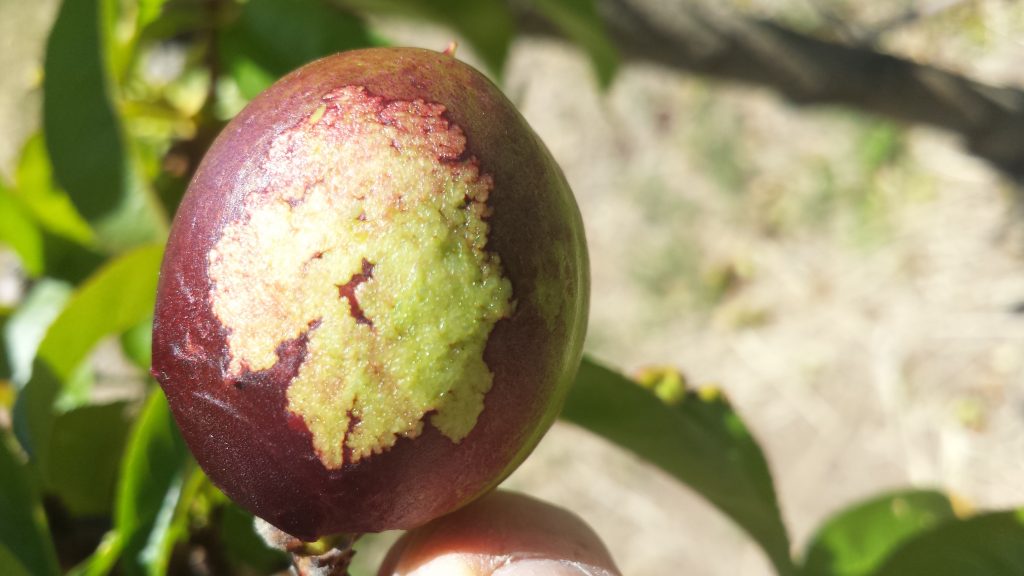
Is it worth growing heritage varieties?
If skin marks are severe enough they can crack and become the site for an infection to start. More commonly though, they’re literally just skin deep and don’t affect the quality of the fruit underneath.
Despite the problems with heritage varieties, they still deserve a place in your garden. They might be a pain to get to market in good condition, but the home gardener has a huge advantage.
You get to tree-ripen the fruit and eat it when it’s perfect.
There’s a pretty good chance that they’ll have some skin marks and not look as pretty and blemish-free as we expect modern fruit to look. But it’s worth it because most heritage varieties are absolutely delicious!
We no longer have any Goldmine trees in our orchard because the trees were burnt in the fire we had a few years ago. But they were too good to let go, so we still grow and sell the trees in Carr’s Organic Fruit Tree Nursery.
Despite all the difficulties, we love them and frequently recommend them for home orchards.
If you can tend the tree carefully, protect the fruit, and then pick it when it’s beautifully ripe and ready to eat, you can end up with a result as perfect as these beauties!

Looking after your trees properly can help
It’s quite hard to find Goldmine trees these days (and almost impossible to buy the fruit) because they’re very unfashionable. But if you have space for a tree in your garden and can track one down (and you have time to look after it properly) it will reward you.
Looking after your nectarines carefully is key. Nectarines and peaches are closely related and require the same care, like controlling Leaf curl, preventing Brown rot, and protecting them from pests like birds and earwigs.
Care, and attention to detail at the right time will give you the best possible chance of getting some decent fruit from those heritage beauties.
The verdict? Fiddly, but definitely worth the bother.
Related Articles
How much fruit will your tree produce?
Working out how much fruit a mature fruit tree can grow will help you plan how many trees you need in your garden to meet your family’s needs.
How to prune your apple tree
Pruning apple trees takes a little more specialist knowledge than other fruit types, but your trees will reward you with ample crops.
Taming monster fruit trees with renovation pruning
Learn how to use a technique called renovation pruning to tame large, unpruned, and out-of-control monster fruit trees.

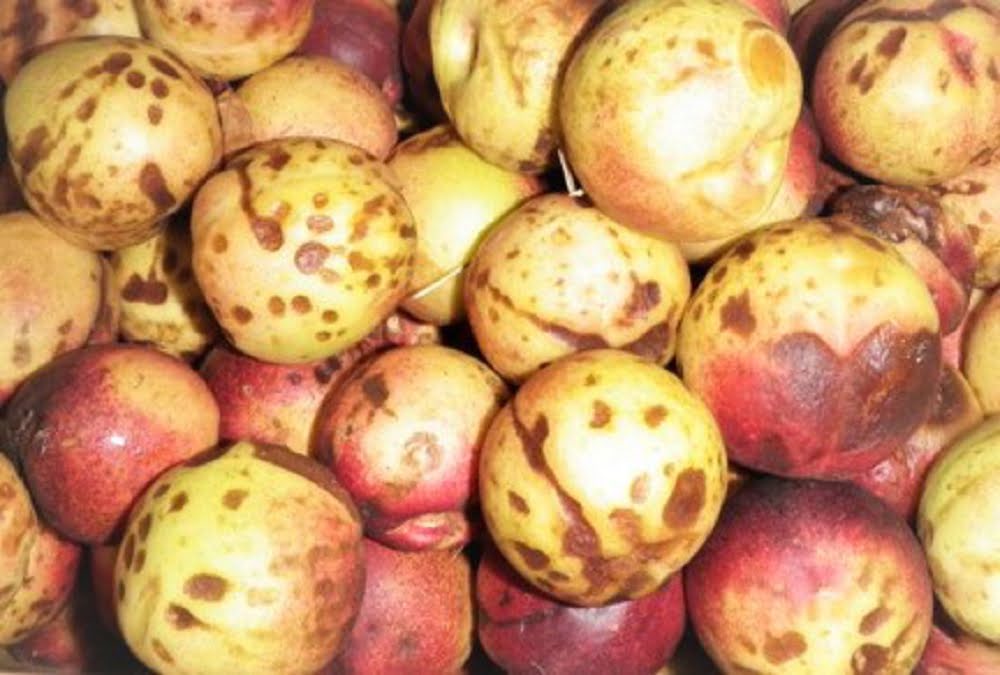
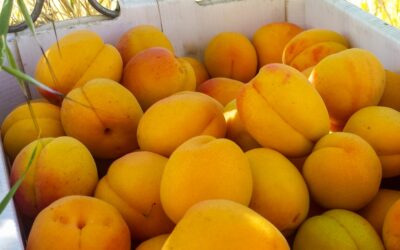
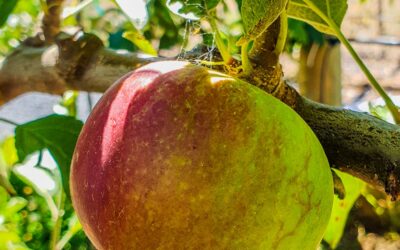
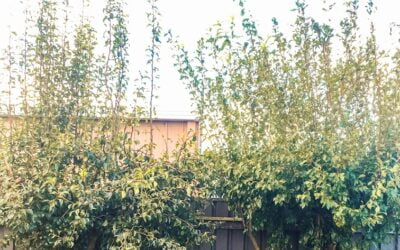


I have a Goldmine and love it . It always bears well and so the losses aren’t a problem. At the moment I have the opposite problem as I’m struggling to deal with all the nectarines. As you say they don’t travel well so even giving them away is tricky. I’ve bottled lots, stewed lots and last week I made jam. Not my favourite jam but I was running out of storage space. I also discovered that my ducks love the soft bruised discards. Not so much the chooks surprisingly. Definitely worth having and netting.
Yes, they’re a beautiful nectarine aren’t they Dora? Sounds like you’ve been very creative in dealing with your glut!
What would cause Nectarines to go mouldy on the tree ,
Even before they are ripe
They can get a few different fungal diseases Jan, but the most common one is Brown rot. Have a look at the “Keep Your Fruit Trees Free from Disease” short course (https://growgreatfruit.com/product-category/pests-and-diseases/) for details about the disease and how to control it.